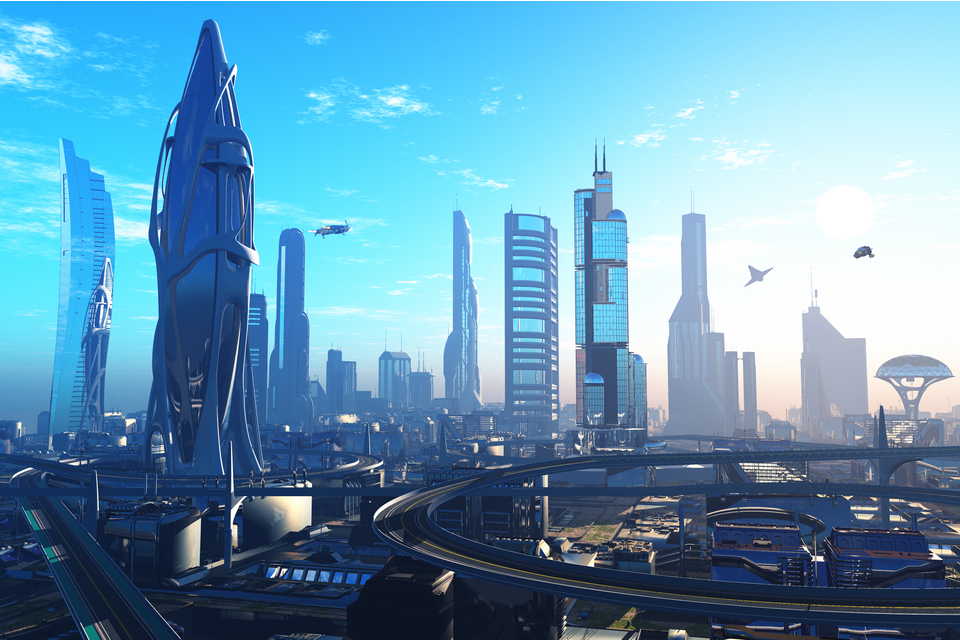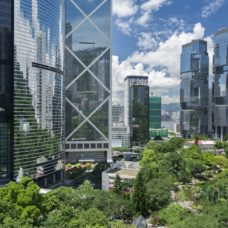In his YouTube video entitled The Future of Cities, Oscar Boyson travels to modern cities in search of the ‘City of Tomorrow.’ The video sparks an interesting conversation that brings up some important questions about what the city of the future will look like. Here’s a quick rundown.
The rise of Industry 4.0 is changing the world, and cities are at the epicenter of that change. Historically, civilizations built their cities around a central structure such as a castle, commons, church, factory, or whatever drew a population to live there.
New technologies such as 3D printers are slowly making factories obsolete, and modern cities are moving away from producing things to providing services. An interneworking of devices and infrastructures will make future cities places where every part integral.
If future cities won’t be built around such epicenters, how will they be built? That question opens a conversation. Oscar Boyson’s “The Future of Cities” showcases modern cities and older cities alike that are incorporating modern innovations to improve existing infrastructures.
What Future Cities Will be Like
In the future, cities will need to adapt to many developing factors in the world and to do this they will need to create innovative solutions to modern problems. For example, the city of Reykjavik in Iceland features geothermal vents that are being utilized to create renewable power plants. These solutions often take root during the planning phase of urban development, and more efficient policies during the planning stage make ideas such as advanced public transportation systems easier to implement.
For example, the city of Reykjavik in Iceland features geothermal vents that are being utilized to create renewable power plants.Click To TweetAdvanced public transportation is a high priority for future cities because it benefits the populace and the environment. Better public transportation means fewer people need to drive. Fewer people using cars means the effects of pollution and congested traffic are significantly reduced.
With proper planning, cities can even make roadways designed for futuristic transportation options like self-driving cars. The Chinese city of Shenzen is a good example of this kind of design. They planned a streamlined and elevated highway system to allow cars and even drones a specified area of operation.
The result of this design in Shenzen leaves more room for people to inhabit. It removes obstacles of automated travel by separating highway and public spaces.
Songdo in South Korea, which is currently the largest private real estate development in history, is being built to include everything a modern city will need in the new industrial revolution.
Songdo in South Korea is currently the largest private real estate development in historyClick To TweetFuture cities will need an engaged community in order to succeed. Modern solutions are changing cities around the world, and healthy cities use local labor forces. After all, the city should be a place in which people can take personal pride.
Cities aren’t made up of buildings and highways, they’re made of people. If the community is invested in the success of their city, then they will not have to look far when that city needs help.
Technology is Changing our Assumptions
Today we’re operating under some assumptions about how cities function. We need to manage population density, privacy, and public spaces. We need good public transportation but also space for private vehicles. Until something changes in the world of construction, we need large swaths of land to build our biggest buildings.
Yet, these concerns can be alleviated with the advent of Industry 4.0.
Technology provides societies with answers to complex problems. According to Carlo Ratti, the director of the Senseable City Lab at MIT, “Technology is the answer, but what is the question?” As it turns out, the question may vary from city to city.
Resources like water and power are critical to the success of a modern metropolis if it is going to support its populace. Traditional methods often require burning fossil fuels. Newer methods are using renewable solutions to cut costs and reduce damage to the environment. Take Makoko in Lagos, where citizens have created a floating school to mitigate the effect of high flooding in the area.
The video suggests that current and future cities should innovate. They should increase food production by allocating space to industrial vertical farming, or support gardens on roofs that can recycle gray water. Individual projects like the SAROS water desalinator are already being developed to provide clean water to communities with minimal environmental impact. Whatever the local problem, technology can fix it. It’s just a matter of assessing the problem and applying new technologies to the solution.
Check out the video for more information.



















Investment is one of the best ways to achieve financial freedom. For a beginner there are so many challenges you face. It’s hard to know how to get started. Trading on the Cryptocurrency market has really been a life changer for me. I almost gave up on crypto at some point not until saw a recommendation on Elon musk successfully success story and I got a proficient trader/broker Mr Bernie Doran , he gave me all the information required to succeed in trading. I made more profit than I could ever imagine. I’m not here to converse much but to share my testimony; I have made total returns of $10,500.00 from an investment of just $1000.00 within 1 week. Thanks to Mr Bernie I’m really grateful,I have been able to make a great returns trading with his signals and strategies .I urge anyone interested in INVESTMENT to take bold step in investing in the Cryptocurrency Market, he can also help you RECOVER your lost/stolen Cryptocurrencies. you can reach him on WhatsApp : + 1 (424) 285 – 0682 or his Gmail : BERNIEDORANSIGNALS @ GMAIL . COM bitcoin is taking over the world, tell him I referred you